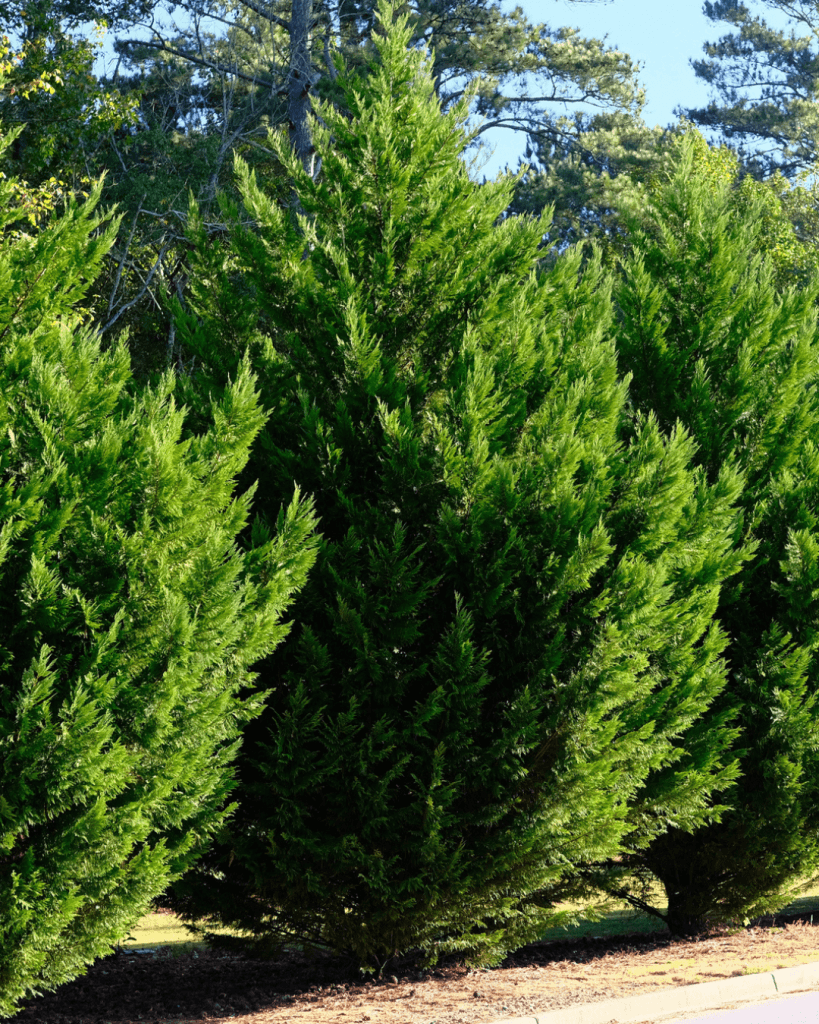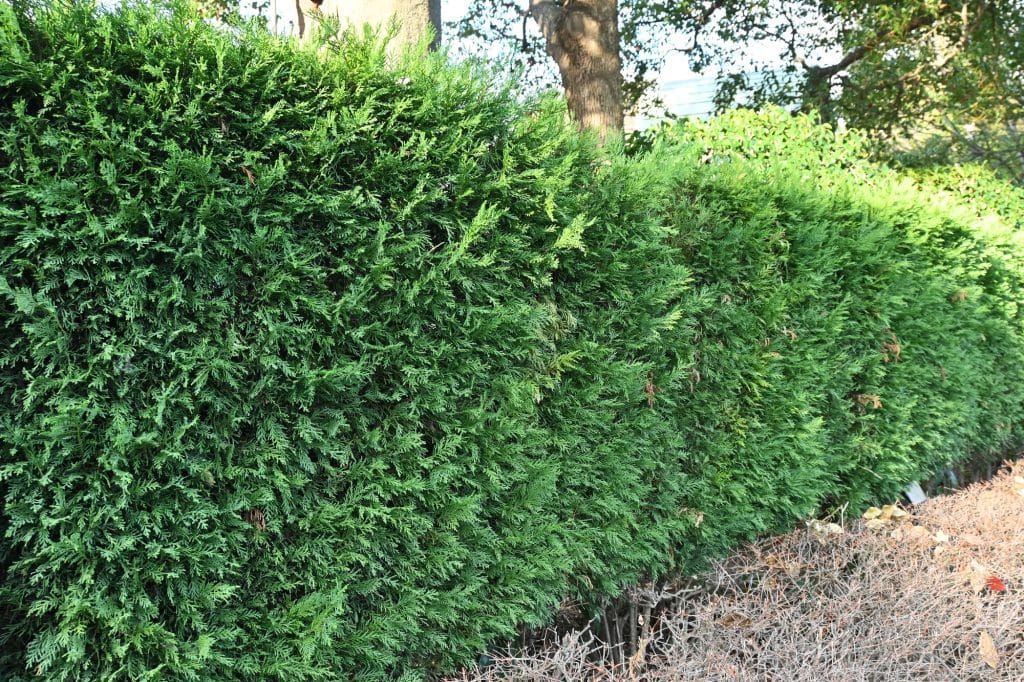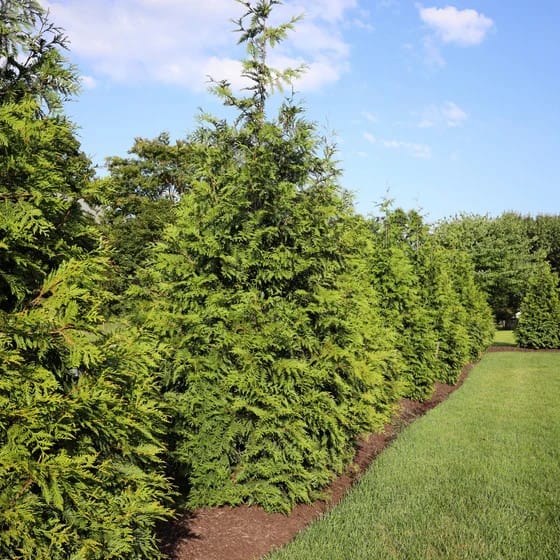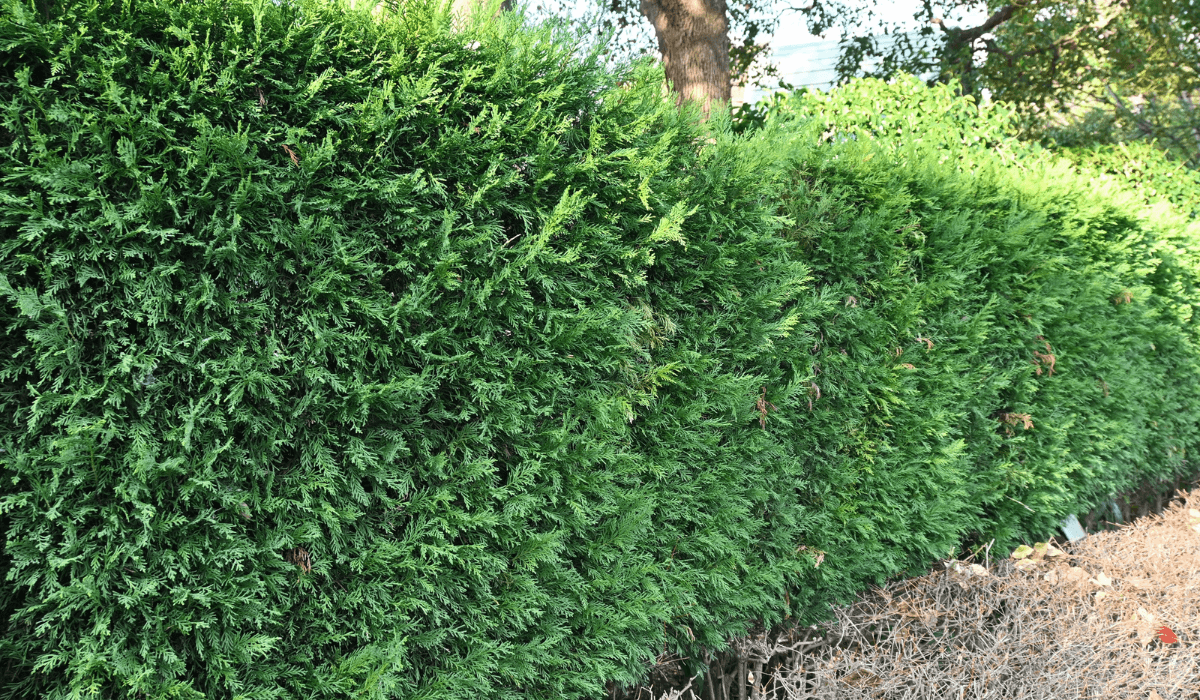Looking for fast, reliable privacy?
Whether you’re shielding your yard from nosy neighbors, blocking street noise, or creating a green windbreak, a tall, dense screen of trees can offer the perfect natural solution. And when it comes to rapid growth, thick foliage, and classic good looks, one tree consistently tops the list: the Leyland Cypress.
Beloved by homeowners across the U.S., this fast-growing evergreen can transform an open yard into a private oasis in just a few years. In this article, we’ll explore why the Leyland Cypress remains one of America’s favorite choices for privacy screening—and what you need to know before planting it in your own landscape.
The Leyland Cypress

These are the reasons this tree has become the best-selling variety for screening.
Check current prices for these trees at Garden Goods Direct.
1. Fast Growth That Delivers Quick Results
Few trees can compete with the Leyland Cypress when it comes to speed.
Under ideal conditions, this tree can grow an impressive 3 to 5 feet per year. That means in just a few seasons, you can go from an open, exposed yard to a tall, green wall of privacy.
For homeowners in new developments or on properties without mature landscaping, this rapid growth is a major draw.
2. Dense Evergreen Foliage for Year-Round Coverage
Privacy doesn’t stop when the seasons change. The Leyland Cypress keeps its dense, feathery green needles throughout the year, providing a consistent screen against wind, noise, and unwanted views.
Whether you’re looking to block out a road, a neighboring home, or an unsightly utility area, this tree delivers dependable coverage in every season.
3. Tall, Uniform, and Elegant Appearance
In addition to being functional, the Leyland Cypress is also beautiful. When planted in rows, the trees quickly form a straight, symmetrical barrier that looks both natural and refined.
With mature heights often reaching 60 to 70 feet and widths of 15 to 25 feet, these trees offer a substantial presence without feeling overbearing.
4. Adaptable and Easy to Grow in Many Climates
Part of the Leyland Cypress’s widespread popularity is due to its adaptability. It thrives in USDA Hardiness Zones 6 through 10 and tolerates a wide range of soil types, from sandy to clay-heavy.
While it prefers full sun, it can also handle partial shade. This flexibility makes it a viable option for homeowners in diverse regions across the United States.
5. Cost-Effective Compared to Fencing or Other Trees
Installing a privacy fence can be expensive, especially over a large area. The Leyland Cypress offers a natural, living alternative that often proves more affordable in the long run.
Because these trees grow so quickly and so large, you need fewer of them to get full coverage—and maintenance costs are relatively low once the trees are established.
6. Excellent for Formal or Informal Hedges
While often used as large privacy screens, Leyland Cypress trees can also be pruned and shaped into formal hedges.
Their dense foliage and uniform growth habit make them ideal for creating clean lines or soft, natural barriers. Whether you’re aiming for a manicured look or a more relaxed border, these trees adapt well to light shaping.
7. Low-Maintenance Once Established
One of the most appealing aspects of the Leyland Cypress is its ease of maintenance. After the first year of regular watering and basic care, these trees require little intervention.
They generally do not need frequent pruning, and they thrive with minimal fertilization. This makes them an excellent choice for busy homeowners who want results without constant upkeep.
Potential Drawbacks

Despite its many benefits, the Leyland Cypress isn’t without its challenges.
In humid regions or poorly drained soils, it can be susceptible to diseases like cypress canker and root rot. These conditions can shorten the tree’s lifespan to 15 to 25 years.
Additionally, the tree’s large size means it can quickly outgrow small spaces or crowd nearby structures if not properly spaced and maintained. Other issues include…
Weak Wood Structure: Leyland Cypress trees have relatively brittle wood, especially as they age. This can lead to branch breakage during storms or high winds, potentially damaging nearby structures or landscaping.
Shallow Root System: Their roots grow wide but not very deep, which can make them more susceptible to toppling in saturated soils or during windstorms. The shallow roots can also interfere with lawns, sidewalks, or nearby garden beds.
Shorter Lifespan: Compared to other evergreen trees, Leyland Cypress has a modest lifespan—typically around 15 to 25 years—especially if stressed by poor soil drainage, crowding, or disease.
Firewood Quality: Leyland Cypress is technically usable as firewood, but it’s not ideal. The wood is soft, burns quickly, and produces a lot of creosote when burned green. If seasoned properly, it can be used in outdoor fire pits or kindling, but it’s not recommended for indoor wood stoves or fireplaces.
End-of-Life Removal Can Be Costly: Due to their height and bulk, removing mature Leyland Cypress trees can be expensive and labor-intensive. If planted too close together or near structures, taking them down later can require professional help and heavy equipment.
Their shallow roots can also make stump removal more complex if roots have spread into other areas of your yard.
Planting Tips

To get the best results from your Leyland Cypress, plant trees 6 to 10 feet apart in well-draining soil and full sun.
Water them regularly during their first year to establish strong roots, but avoid waterlogged conditions. Minimal pruning is needed unless you want to shape or size the trees—they naturally grow into a tidy, uniform form.
Leyland Cypress thrives in USDA Zones 6 through 10, which includes much of the southern and coastal United States.
It performs especially well in states like North Carolina, Georgia, South Carolina, and parts of California, where the climate is mild and the soil tends to drain well. These trees also grow successfully in many parts of Texas, Virginia, and the Pacific Northwest.
However, they are not ideal for extremely cold northern climates, such as those in Minnesota, North Dakota, or northern New England, where harsh winters can cause damage.
Similarly, very hot and dry desert areas, such as southern Arizona or Nevada, may stress the trees unless irrigation and care are carefully managed. Humid environments with poorly draining soil can also increase the risk of disease.
Best Alternatives to Leyland Cypress

If you love the look and benefits of Leyland Cypress but are concerned about disease or space, several excellent alternatives exist:
- Thuja Green Giant: Similar appearance and growth rate but more disease-resistant
- Eastern Red Cedar: A tough native option with dense foliage
- Nellie Stevens Holly: An evergreen with a more compact form and attractive berries
- Clumping Bamboo: Fast-growing and non-invasive varieties offer a unique look and rapid privacy
Is the Leyland Cypress Right for Your Yard?
The Leyland Cypress remains a top choice for American homeowners seeking fast, attractive, and effective privacy.
Its rapid growth, lush year-round foliage, and ease of planting make it a standout in the landscape world. Just be sure to consider your space, climate, and soil conditions to ensure long-term success.
If it fits your setting, the Leyland Cypress can transform your outdoor space into a peaceful, private retreat in just a few short years.
